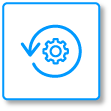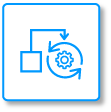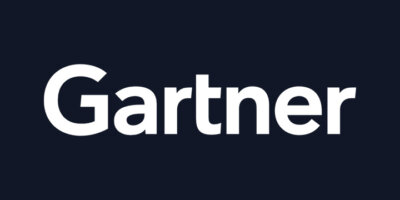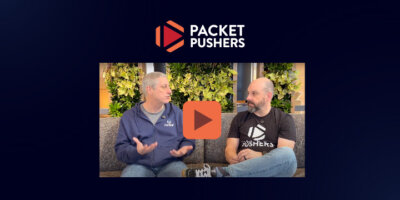Standardize Change.
Hybrid infrastructure demands more than tools. It demands an operational strategy that reduces risk, cuts cost, and accelerates delivery – without sacrificing control or compliance.
Infrastructure as a Strategic Control Surface
Hybrid infrastructure has become the backbone of digital business, but managing it remains painfully fragmented.
Legacy CLI workflows live alongside cloud-native pipelines. Teams operate in silos. And automation often starts and ends with a script.
Meanwhile, business pressure is mounting: Deliver faster, reduce cost, prove compliance, and prepare for AI-driven operations. It’s not enough to just automate. You need to standardize, govern, and scale across every environment, toolchain, and team.
CIOs, IT Leaders, and Enterprise Architects are reframing infrastructure as a unified operational control surface and leading organizations are turning to Itential to make that real.
Why IT Leaders Are Reprioritizing Infrastructure Operations
- Inconsistent workflows across domains slow delivery and create risk.
- Tribal knowledge and custom scripts don’t scale – or stay secure.
- Compliance is reactive and difficult to prove across environments.
- Tool sprawl and overlapping automations drive up costs.
- AI, observability, and cloud initiatives demand integration-ready ops.
How Itential Enables Scalable, Policy-Aligned Infrastructure Operations
Itential enables a modern operating model for orchestrated, automated infrastructure, purpose-built for enterprise-scale operations.
It’s more than automation. It’s consistency, governance, and acceleration at scale.
With Itential, IT Leaders and Architects can:
 Establish a Consistent Operational Model
Establish a Consistent Operational Model
Standardize how infrastructure changes are requested, approved, and executed across teams and tools with complete visibility, tracking, and governance from start to finish
 Orchestrate Cross-Domain Workflows
Orchestrate Cross-Domain Workflows
Automate complex tasks across on-prem, cloud, and edge by connecting your ITSM, source control, infrastructure tools, and scripts into one seamless flow.
 Enforce Configuration & Policy Compliance
Enforce Configuration & Policy Compliance
Automatically apply golden configurations, validate every change, and ensure continuous policy enforcement across devices, services, and environments.
 Maximize Existing Tech Investments
Maximize Existing Tech Investments
Integrate with your current tools – Ansible, Terraform, ServiceNow, and more – to eliminate redundancy, reduce spend, and streamline automation efforts.
 Scale Automation
Scale Automation
Across Teams
Empower more of your organization to automate with reusable workflows, low-code design tools, and enterprise-grade controls like RBAC and approvals.
 Future-Proof for
Future-Proof for
AI & Innovation
Adapt to evolving strategies and technologies with a flexible platform that supports AI agents, custom integrations, and next-gen operational models.
Trusted by the World’s Most Secure Enterprises
Itential is delivering measurable outcomes at enterprise scale, across financial services, utilities, and federal sectors.
![]()
70% Faster
Infrastructure Changes
![]()
80% Reduction
in Manual Work
![]()
25% Reduction
in Tooling & Operational Costs
Cross-Domain Orchestration at Scale
Audit-Ready Operations
Continuous Compliance Across Distributed Infrastructure
Global Manufacturing Leader
Challenge
Network and cloud teams were managing infrastructure changes with isolated tools and conflicting processes, leading to inconsistent service delivery and policy enforcement.
Solution
Itential unified change management across cloud, WAN, and data center environments, integrating directly with existing ITSM and IaC tools.
Outcome
Increased change velocity by 40%, improved compliance readiness across global operations, and saved more than 834 hours on over 1,600 automated service requests in the first year.
U.S. Energy Utility
Challenge
Operations teams lacked a consistent way to manage configuration across legacy and modern systems, creating drift and audit exposure.
Solution
Itential delivered golden config enforcement, change validation, and drift remediation across thousands of devices, all governed by policy.
Outcome
Achieved real-time configuration control for over 12,000 devices, validated compliance continuously, and reduced manual remediation effort by more than 30% across network operations.
Major Financial Institution
Challenge
Engineering teams relied on one-off scripts for critical network tasks, which made visibility, reuse, and auditability nearly impossible.
Solution
Itential helped operationalize automation through reusable workflows, cross-domain orchestration, and enterprise-wide RBAC and audit trails.
Outcome
Automated 17,000+ load balancer migrations in months instead of years, reducing manual change effort by 90% and improving delivery timelines by over 12 months.
Global Tech Enterprise
Challenge
Growing infrastructure complexity was slowing down delivery and increasing tool maintenance overhead.
Solution
Itential consolidated infrastructure automation into a single orchestration layer, reducing reliance on fragmented tooling while enhancing team collaboration.
Outcome
Scaled orchestration to over 200 million automated jobs per month, standardized operational workflows across teams, and reduced tool sprawl costs by 25% annually.
Frequently Asked Questions
How quickly can we start seeing value with Itential for infrastructure operations?
With Itential, many enterprises begin automating low-risk workflows (e.g. VLAN provisioning, Interface changes) within weeks, not months. As you scale reuse of workflows and integrate across toolchains, change velocity increases, and cost savings compound over time.
What is required from our infrastructure and network stack to adopt Itential smoothly?
You’ll want clean device inventory, golden config baselines, API-accessible devices, and alignment around policies. Itential works with existing tools (Ansible, Terraform, ITSM), so much of what you have can be reused. Training & deployment services can help accelerate ramp-up.
How does Itential help reduce technical debt from legacy scripts and tool sprawl?
By consolidating automation under one orchestration layer, reusing existing scripts, and enforcing governance. That means fewer bespoke scripts, better visibility, and less maintenance burden.
Can we adapt Itential to our cloud strategies (hybrid, multi-cloud, edge)?
Yes. Itential supports infrastructure across on-premise, cloud (AWS, Azure, etc.), edge, and hybrid environments. You can orchestrate workflows that span domains and maintain consistent policies.
What kinds of governance, policy, and security features are available at the architecture level?
Features include Role-Based Access Control, approvals and change windows, blast-radius controls, compliance validation (golden configs, drift detection), audit logging, and secure execution via gateways. All of these give architects oversight and control.
How do we ensure our automation scales safely (across teams, geographies, device types)?
Use reusable workflows and templates, enforce policy and guardrails, deploy multiple gateways for locality, and monitor execution. Itential’s design supports scaling while keeping consistency and minimizing risk.
How does Itential integrate with existing infrastructure tools (CI/CD, IaC, observability, etc.)?
It integrates out of the box with things like Ansible, Terraform, Git tools, ITSM platforms, and observability/monitoring systems. This lets architects bridge existing pipelines into Itential workflows without rebuilding everything.
What is the risk if we don’t adopt a standardized, governed automation strategy now?
Risks include drift causing outages, security vulnerabilities, difficulty in proving compliance, prolonged manual effort, operational silos, and being unable to scale with demands for speed (especially in cloud/edge/AI contexts).
What role will AI / copilots play for infrastructure leaders with Itential?
AI can assist with proposing workflows, surfacing risk or drift issues, generating pre-post validation checks, and offering recommendations. But execution remains governed: all actions get validated, logged, and under policy oversight.
How are infrastructure costs affected (both CAPEX and OPEX)?
Itential can reduce OPEX by automating manual effort, cut costs associated with outages or misconfigurations, and help maximize existing investments in tools/scripts. Some CAPEX may come from deployment or provisioning gateways, but these investments typically pay back within months via efficiency and risk reduction.
No blog posts found.
No other posts found.






